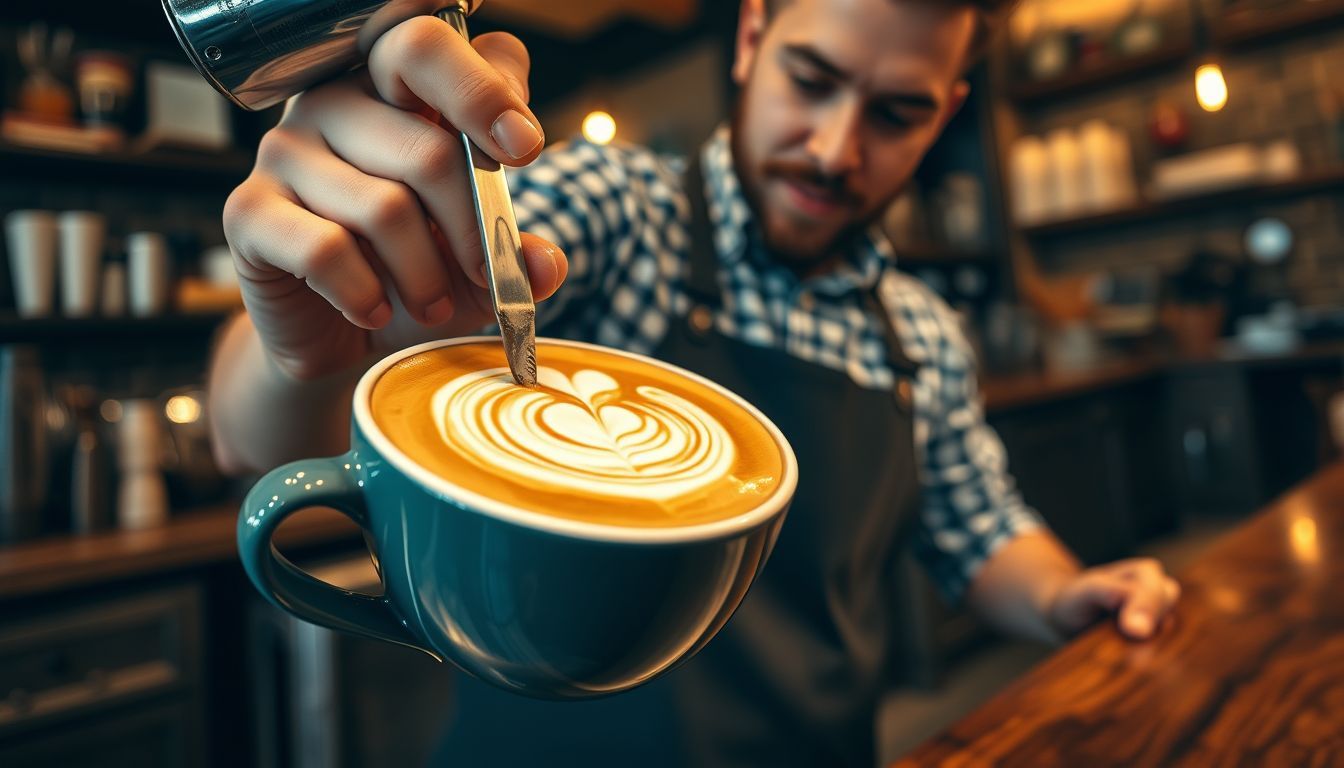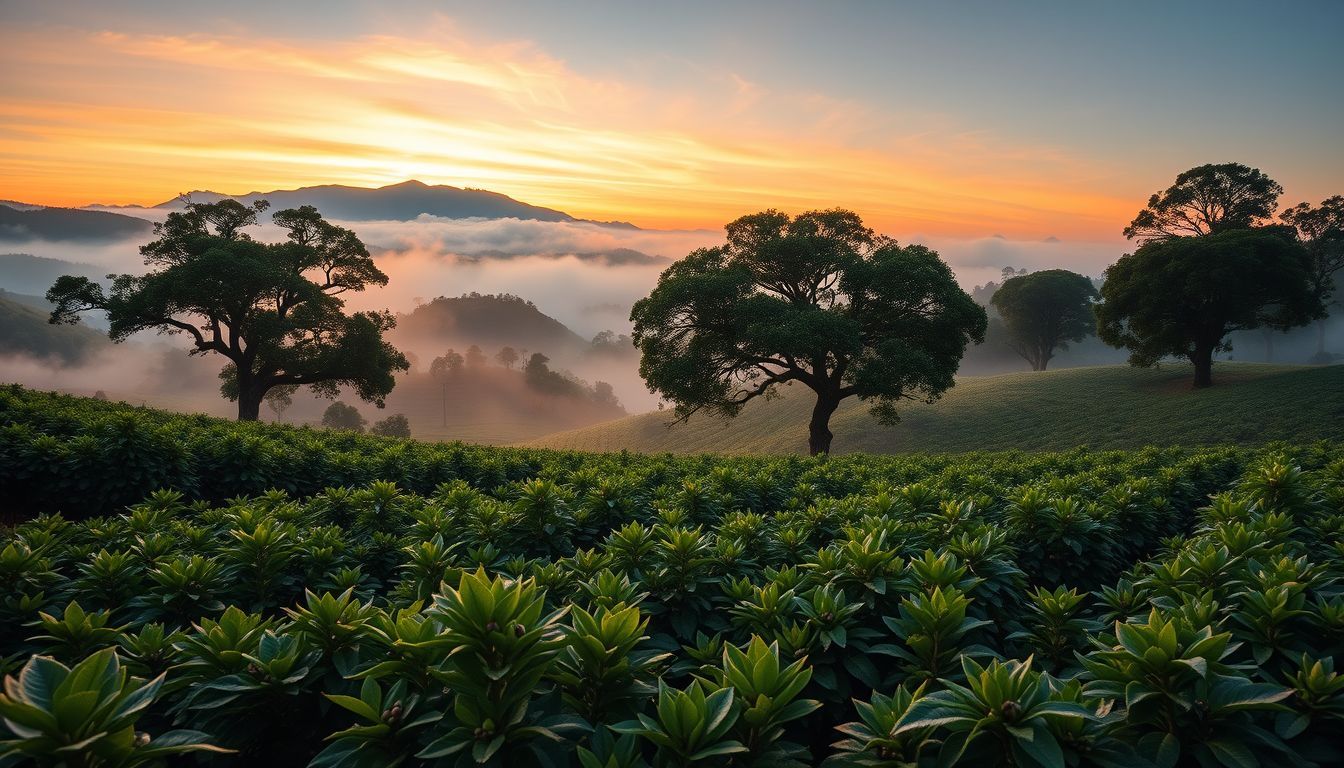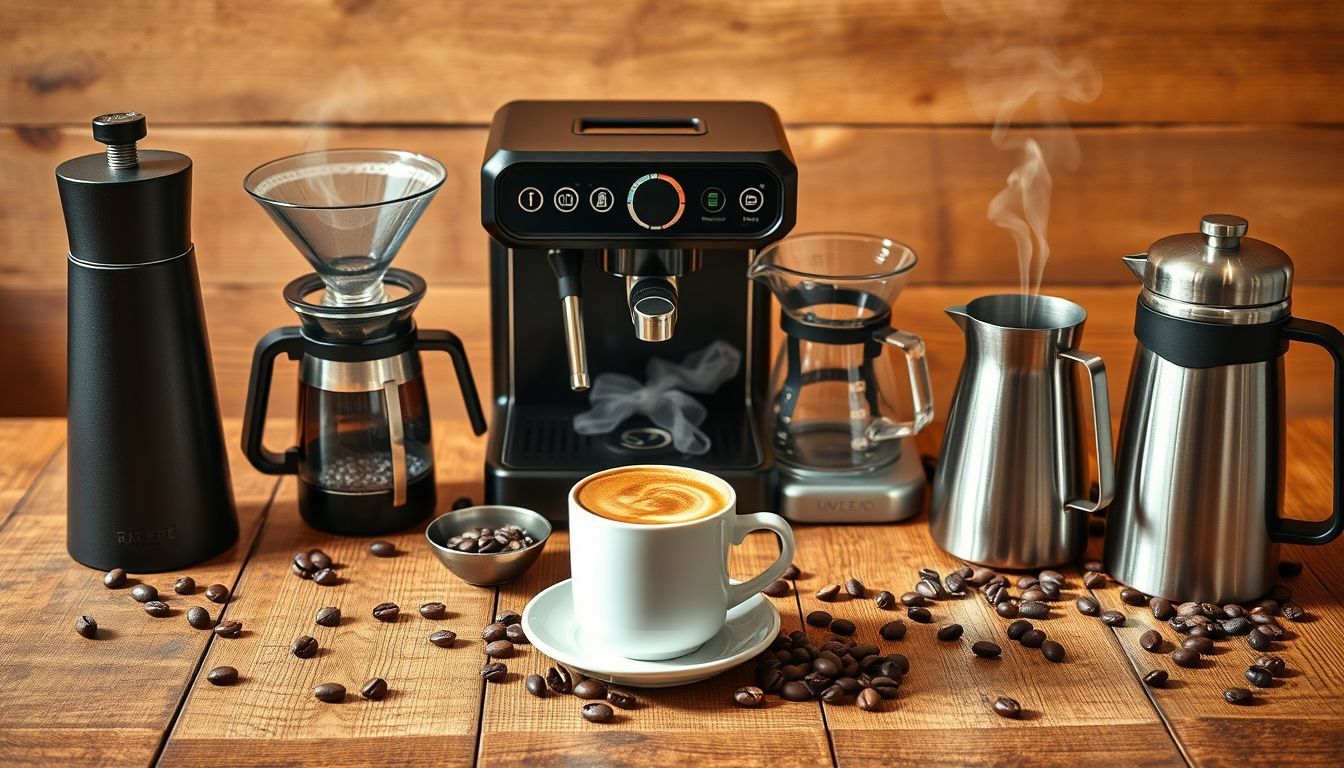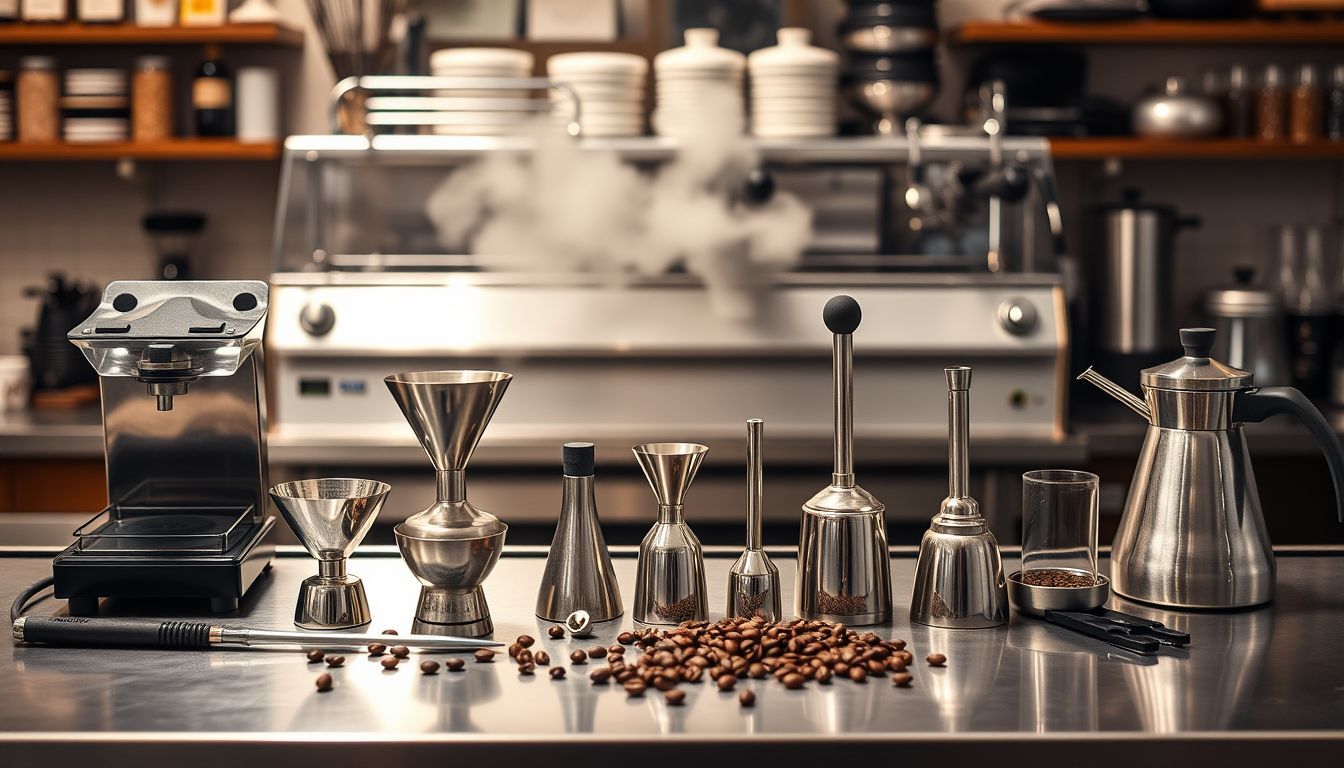The Art and Science of Coffee Latte Art: Techniques, Patterns, and Visual Storytelling
Embark on a journey through the enchanting world of latte art, where baristas transform coffee into canvases of intricate designs. Discover the history, techniques, and cultural significance behind this mesmerizing craft.

Amazon Affiliate Disclosure
This post contains affiliate links. If you purchase through these links, we may earn a small commission at no additional cost to you.
The Enchanting World of Latte Art
In the realm of coffee, where aroma and taste reign supreme, there exists an art form that captivates the eyes and stirs the soul: latte art. This delicate craft transforms the humble cup into a canvas, where baristas weave intricate patterns and tell visual tales with steamed milk and espresso. Join me on a journey through the history, techniques, and cultural significance of this mesmerizing practice.
Origins: A Dance of Milk and Espresso
The story of latte art begins in the early 20th century, intertwined with the evolution of espresso in Italy. As the espresso machine gained prominence, baristas began experimenting with the interplay between rich crema and velvety milk. This exploration laid the foundation for the art form we cherish today.
In the 1980s, across the Atlantic in Seattle, a barista named David Schomer delved deep into the nuances of milk texturing. By 1989, he had perfected the heart pattern, and in 1992, inspired by a photograph from Italy, he introduced the rosetta design to his repertoire. Schomer's dedication and innovation propelled latte art into the limelight, inspiring baristas worldwide to embrace this expressive craft. (en.wikipedia.org)
The Alchemy of Microfoam
At the heart of latte art lies microfoam—a finely textured milk that, when combined with espresso, becomes the medium for artistic expression. Achieving the perfect microfoam requires a delicate balance:
- Milk Selection: Fresh, cold milk with a balanced protein content is ideal. Whole milk is often preferred for its richness, but alternatives like oat or almond milk can also be used with adjusted techniques.
- Steaming Technique: The steam wand introduces air into the milk, creating tiny, uniform bubbles. The goal is a glossy, paint-like consistency that seamlessly integrates with the espresso. (en.wikipedia.org)
- Temperature Control: Steaming milk to a temperature between 140°F and 160°F ensures optimal sweetness and texture. Overheating can scald the milk, while underheating may result in insufficient foam. (newjerseycoffeeschool.com)
Mastering the Canvas: Fundamental Patterns
Embarking on the journey of latte art begins with mastering foundational designs. Each pattern serves as a stepping stone to more intricate creations:
The Heart: Symbol of Affection
1. Begin the Pour: Hold the cup at a slight angle and pour steamed milk into the center of the espresso from a moderate height.
2. Form the Base: As the cup fills, bring the pitcher closer, allowing the milk to flow more freely, creating a circular white dot.
3. Create the Heart: With a swift motion, draw a line through the center of the dot, forming the heart's point. (newjerseycoffeeschool.com)
The Rosetta: Nature's Elegance
1. Initiate the Pour: Similar to the heart, start by pouring milk into the center.
2. Introduce Movement: Once the cup is half full, gently wiggle the pitcher side to side while moving it backward, creating leaf-like patterns.
3. Finalize the Design: Finish with a quick pull-through to complete the rosetta's stem. (newjerseycoffeeschool.com)
The Tulip: Layers of Beauty
1. Layer the Petals: Pour a small amount of milk to form a base, then add successive layers by pouring small hearts on top of each other.
2. Complete the Flower: Finish with a pull-through to connect the layers, forming the tulip's stem. (newjerseycoffeeschool.com)
Advanced Techniques: Pushing Boundaries
For those who have mastered the basics, the world of latte art offers endless possibilities:
The Swan: Grace in Motion
1. Craft the Body: Begin with a rosetta pattern to form the swan's body.
2. Shape the Neck: With a controlled pour, draw a thin line extending from the body, curving to form the neck and head.
3. Add Details: Use etching tools to refine features like the beak and eyes. (coffeeking.com.au)
Etching: Drawing Beyond the Pour
Beyond free pouring, etching allows baristas to create intricate designs using tools:
- Tools: Toothpicks, skewers, or specialized etching pens.
- Technique: After pouring a base pattern, use the tool to draw additional details, such as faces, animals, or abstract designs. (craftcoffeeblog.com)
Cultural Tapestry: Latte Art Around the World
Latte art transcends borders, reflecting the unique cultures and traditions of coffee lovers globally:
- Japan: Embracing minimalist aesthetics, Japanese baristas often create simple yet elegant designs, emphasizing clean lines and subtle beauty. (kopikita.id)
- United States: The rise of specialty coffee shops has turned latte art into a symbol of quality and craftsmanship, with competitions fostering innovation and community. (kopikita.id)
- Africa: Some cafes incorporate ethnic motifs, using latte art to celebrate tribal patterns and cultural heritage. (kopikita.id)
The Journey Continues
Latte art is more than mere decoration; it's a testament to the barista's dedication, skill, and passion. Each cup tells a story, inviting us to pause and appreciate the beauty in our daily rituals. As you sip your next latte, take a moment to admire the artistry atop your cup—a fleeting masterpiece crafted just for you.
Note: The information provided in this article is based on various sources and aims to offer a comprehensive overview of latte art. For further reading, consider exploring the references cited.

Clara Faye
I've always felt like I have one foot in this world and one in another, a place filled with forgotten folklore and whispered magic. My stories are born from that space—from the mists of Ireland and the pages of dusty old books. I write for anyone who still looks at the world and sees the possibility of enchantment


